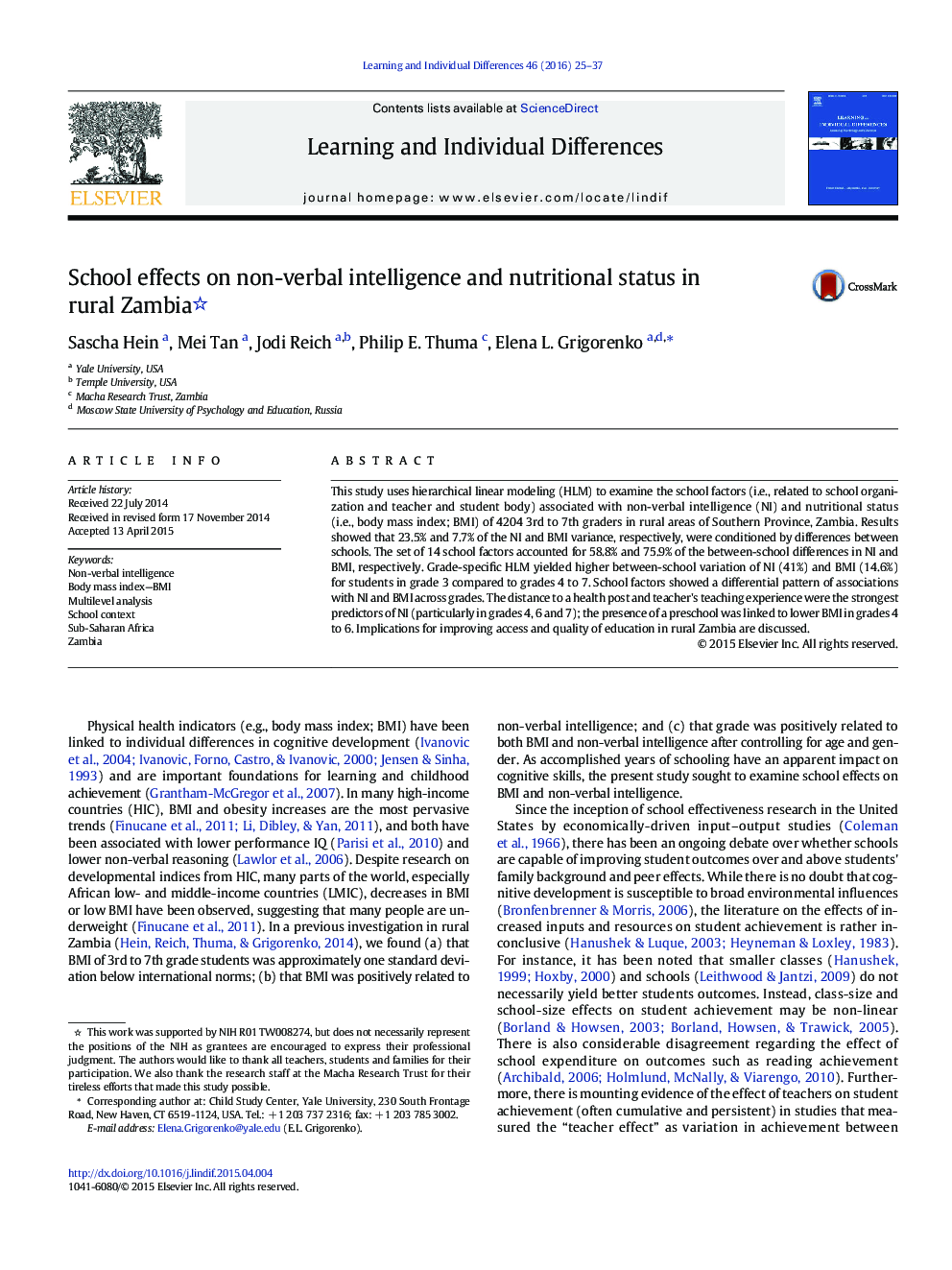| Article ID | Journal | Published Year | Pages | File Type |
|---|---|---|---|---|
| 364490 | Learning and Individual Differences | 2016 | 13 Pages |
This study uses hierarchical linear modeling (HLM) to examine the school factors (i.e., related to school organization and teacher and student body) associated with non-verbal intelligence (NI) and nutritional status (i.e., body mass index; BMI) of 4204 3rd to 7th graders in rural areas of Southern Province, Zambia. Results showed that 23.5% and 7.7% of the NI and BMI variance, respectively, were conditioned by differences between schools. The set of 14 school factors accounted for 58.8% and 75.9% of the between-school differences in NI and BMI, respectively. Grade-specific HLM yielded higher between-school variation of NI (41%) and BMI (14.6%) for students in grade 3 compared to grades 4 to 7. School factors showed a differential pattern of associations with NI and BMI across grades. The distance to a health post and teacher's teaching experience were the strongest predictors of NI (particularly in grades 4, 6 and 7); the presence of a preschool was linked to lower BMI in grades 4 to 6. Implications for improving access and quality of education in rural Zambia are discussed.
